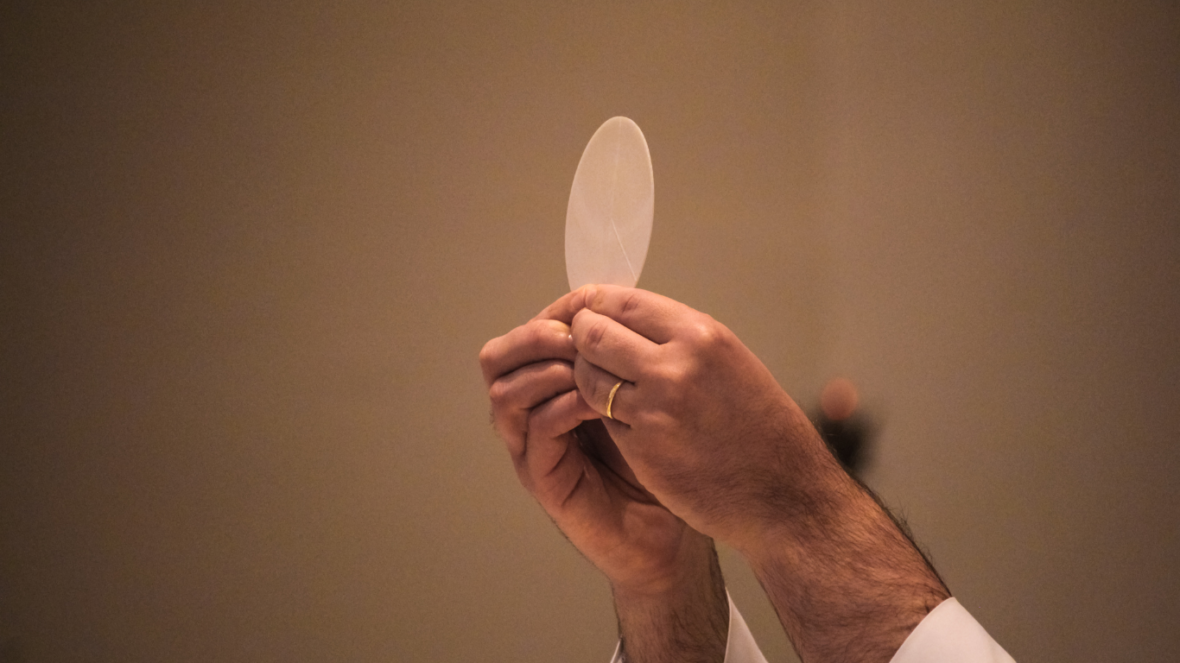When I was putting together my blog about the Blessed Virgin Mary, I never expected that I would get so many comments on social media from individuals from other faiths chastising me about “worshiping” the Mother of God. It really struck me how so many people who are not familiar with the Catholic Church do not understand that there is a very real difference between veneration and worship. In light of these recent interactions, I thought that it would be a good idea to write a bit about these important distinctions.
What is the Difference Between Veneration and Worship in the Catholic Faith?
In the Catholic faith, there is a distinction between veneration and worship, which relates to the way believers honor and show reverence to different figures or objects. Understanding this difference is crucial because it helps prevent confusion or misunderstandings about the nature of these acts of devotion.
Veneration
Veneration is a form of honor and respect given to saints, angels, and sacred objects such as relics, icons, or statues. It involves showing deep reverence and admiration for these individuals or items because of their association with holiness, their exemplary lives, or their significance in the history of the faith. Catholics believe that saints, as well as sacred objects, can serve as conduits or intermediaries to God, and their veneration can aid in the believer’s spiritual journey.
Some common acts of veneration include:
- Praying to saints and asking for their intercession including saints that were mothers
- Using religious icons or statues as aids in prayer and reflection.
- Participating in processions or pilgrimages to honor sacred relics or sites associated with saints.
- Lighting candles or leaving flowers as symbols of reverence at sacred places.
It’s important to note that while veneration involves showing deep respect and honor, it stops short of worshiping these figures or objects. Instead, veneration is considered an intermediary act that redirects the devotion towards God through these holy connections.
For example, during our trip to the National Shrine of St. Elizabeth Ann Seton, I didn’t go to her tomb and worship her. I went to her tomb and prayed that she would bring my intercessions before God on my behalf. I also prayed that I would have the strength and courage to continue on in my Catholic mom journey.
Worship
Worship, on the other hand, is the highest form of devotion reserved solely for God in the Catholic faith. It is an act of offering praise, adoration, and complete surrender to the divine. Worship is directed towards God the Father, God the Son (Jesus Christ), and God the Holy Spirit, who are collectively known as the Holy Trinity.
Key elements of worship in the Catholic faith include:
- Participating in the Holy Mass or Eucharistic celebrations, where Catholics believe in the real presence of Christ in the Eucharist.
- Engaging in personal and communal prayer directly addressing God.
- Singing hymns and psalms in praise of God.
- Engaging in the sacraments, which are considered sacred signs of God’s grace and presence.
The distinction between veneration and worship is significant because while saints and sacred objects may be venerated, they are never worshiped. Worship is reserved solely for God, and any form of divine worship directed toward anyone or anything other than God would be considered idolatry, which is strictly prohibited in the Catholic faith.
Do Catholics Worship the Blessed Virgin Mary?
No, Catholics do not worship the Blessed Virgin Mary. Instead, they venerate her. The veneration of Mary is an important aspect of Catholic devotion, and she holds a unique and revered position in Catholic theology and tradition. Catholics believe that Mary, as the mother of Jesus Christ, played a central role in God’s plan for salvation. She is considered the greatest of all saints and a model of faith and virtue for believers.
Catholic veneration of Mary includes:
- Prayers to Mary: Catholics pray to Mary, asking for her intercession and guidance. They believe that, as a loving mother, she cares for her children and brings their prayers before God.
- Feast Days and Devotions: Throughout the liturgical year, Catholics celebrate various feast days dedicated to Mary, such as the Solemnity of the Immaculate Conception and the Feast of the Assumption. These celebrations provide opportunities for special prayers and devotions.
- Rosary: The Rosary is a popular Catholic prayer that involves meditating on specific events in the lives of Jesus and Mary. It is a powerful form of devotion and contemplation.
- Titles and Appellations: Mary is honored with various titles like “Mother of God,” “Queen of Heaven,” “Our Lady of [specific place or event],” and more. These titles express different aspects of her role and significance in the faith.
While Catholics hold Mary in high esteem and venerate her, they reserve worship exclusively for God, who is Father, Son (Jesus Christ), and Holy Spirit—the Holy Trinity. Worship in the Catholic faith is centered on God alone, and any act of worship directed toward Mary or any other creature would be considered idolatry, which is against Catholic teachings.
It is essential to understand this distinction to avoid misconceptions about Catholic beliefs and practices related to Mary and other saints.
My Takeaway on Veneration vs. Worship
It’s easy for individuals who aren’t familiar with the Catholic faith or who have misconceptions about my religion to make the mistake of conflating veneration and worship. However, the reality is that they are two very different things. I absolutely love the feelings that I have for the Blessed Virgin Mary and the saints, but I know that these feelings of inspiration and veneration fall short of worship. I really encourage those who are not familiar with this concept that, instead of making blanket statements or accusations, to ask questions or, better yet, do further research if there is any type of confusion.




